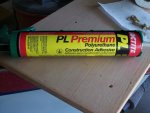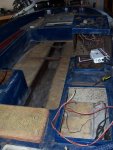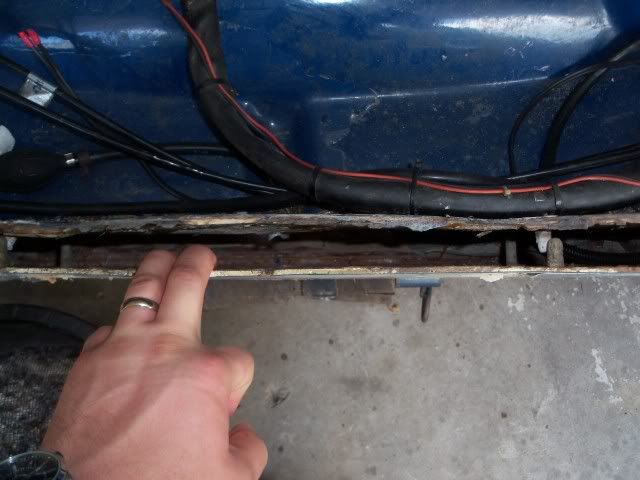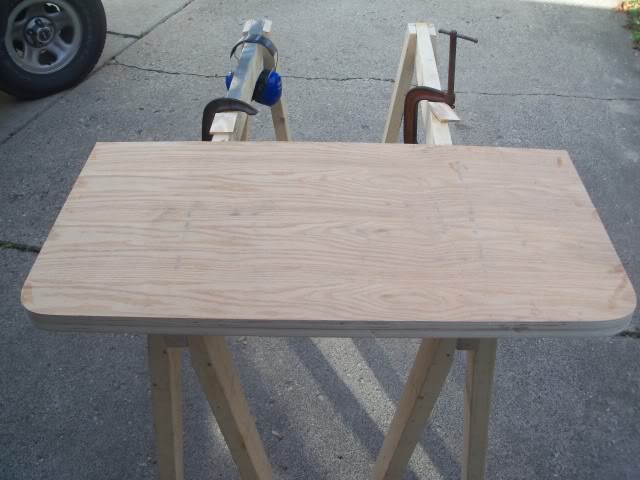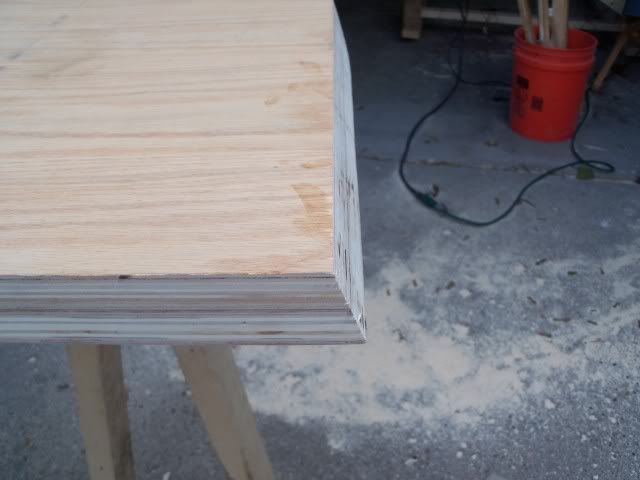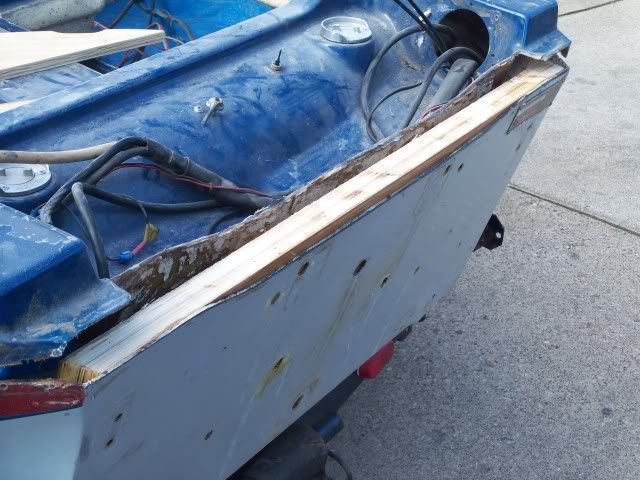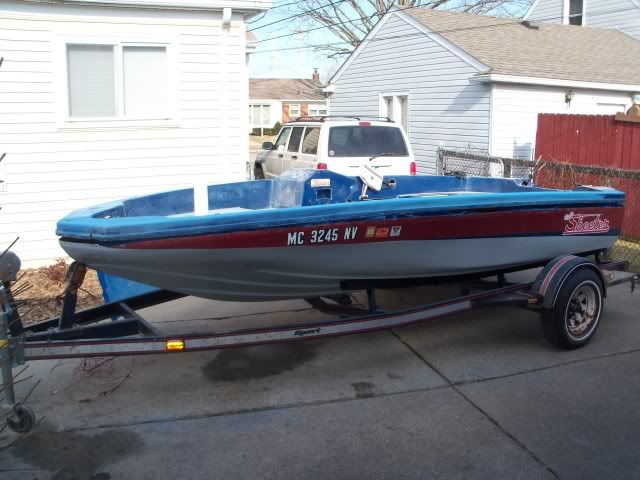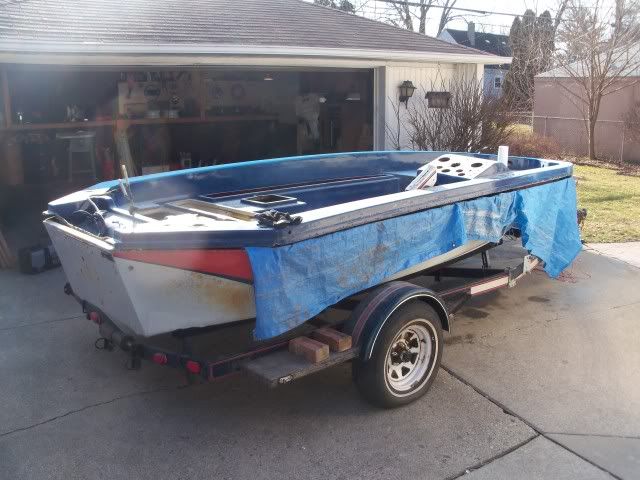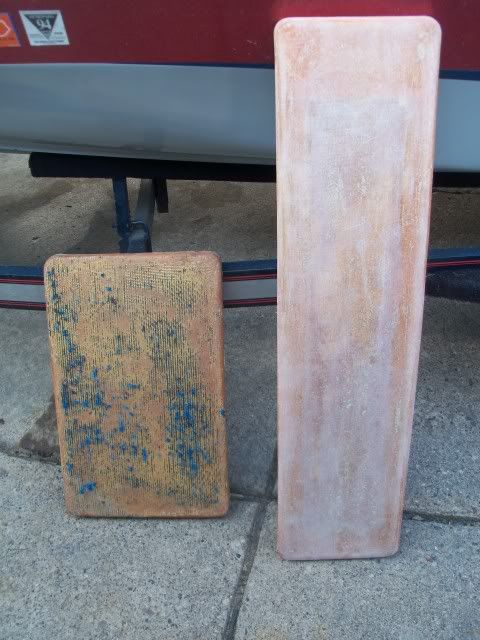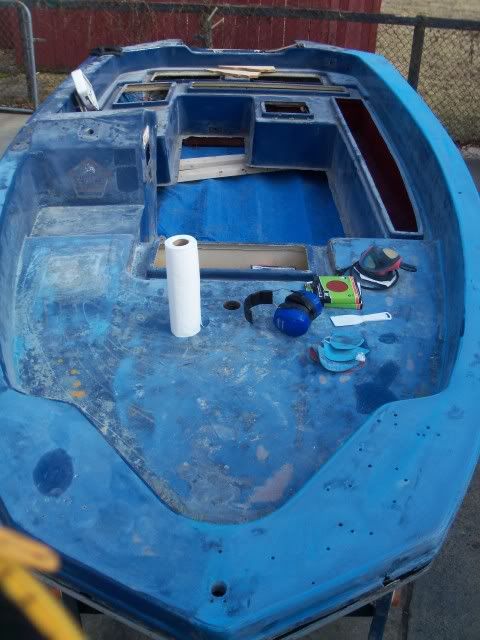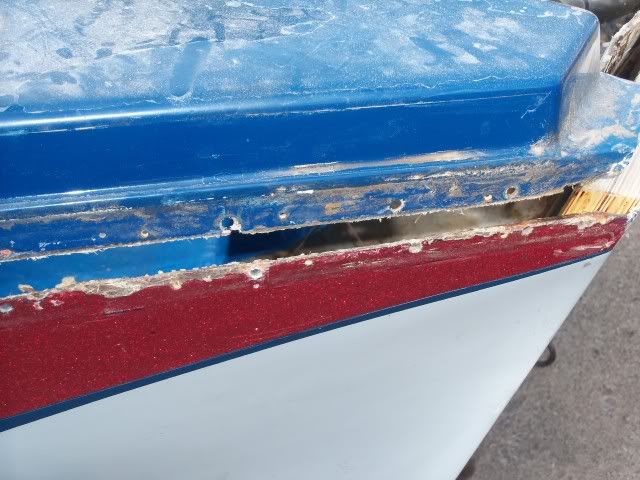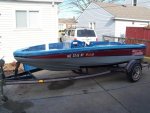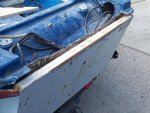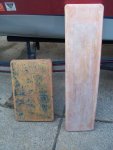fishbone77
Petty Officer 1st Class
- Joined
- Apr 12, 2011
- Messages
- 304
Hey All,
It's been a while since I've posted any updates regarding my 77 Skeeter. About a year and a half ago, I was given the boat by my Father-in-Law. He had run it for several years, started working on the electric and never finished. It was stored outdoors for 7-10, so the floor, stringers, and transom were all rotten, not to mention all the wear and tear a decade of weather has on the deck, carpet, hardware, etc. Amazingly, the '81 Johnson started on the 3rd crank when I hooked it up to the battery - these things were tanks. So here's a quick summary of what's happened since:
Motor: For me this was an important starting point - I'm in medical school, so for me to invest any significant money in restoring the boat, I needed to make sure there was a "working furnace in the house" so to speak. I was encouraged that the motor was a Johnson (you can get parts), but was still pleasantly surprised that after clearing out the mouse nest from inside the motor, it fired after only 3 cranks! After firing it, I went through the motor, replaced the lower unit oil, replaced all the fuel lines, and rebuilt the carbs as well.
Structure: To me this was the project that just kept getting bigger. This past summer was mostly tear-down. I knew there was transom and floor rot, so I popped the cap off the boat. Originally, I thought the stringers might be ok, but after the floor came off, I realized that the stern parts of the stringers were definitely rotten. I also checked the foam that was under the floor and realized that even after sitting in my garage dry for almost a year, the bottom 2 inches of the foam was still saturated with water!
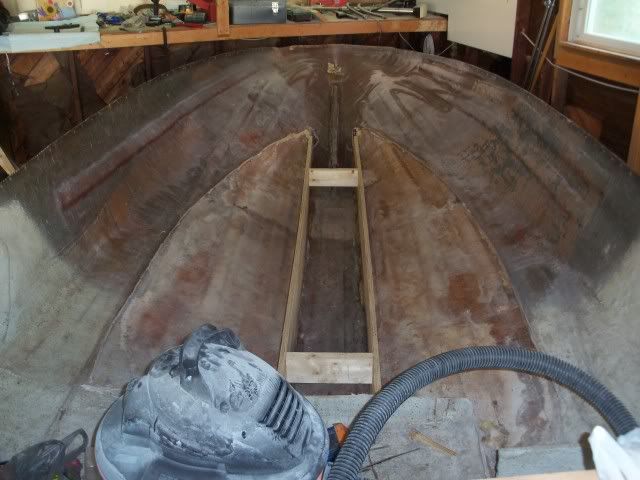
Thus started the grinding...I think by the time I was done with the grinding, my wife thought a dust bomb had gone off in the garage - everything was coated in dust. I took the boat down to the hull, but took the time to build a faux-floor that I could use when mapping out a new floor, and I also wanted to use it to measure vertically to synthesize a couple additional stringers. Later on, I also used it to plot out the profile for my new floor.
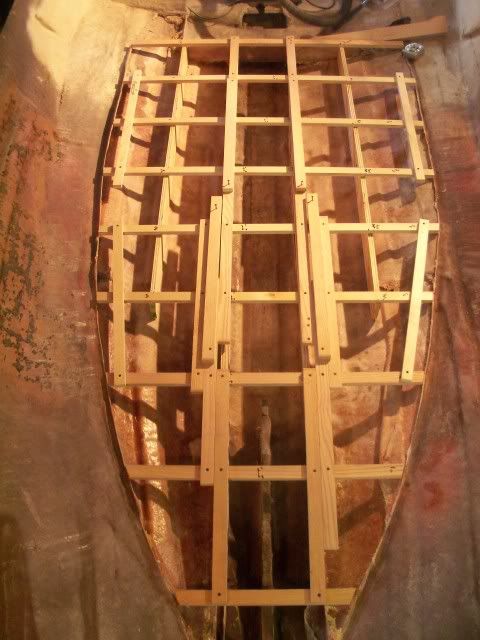
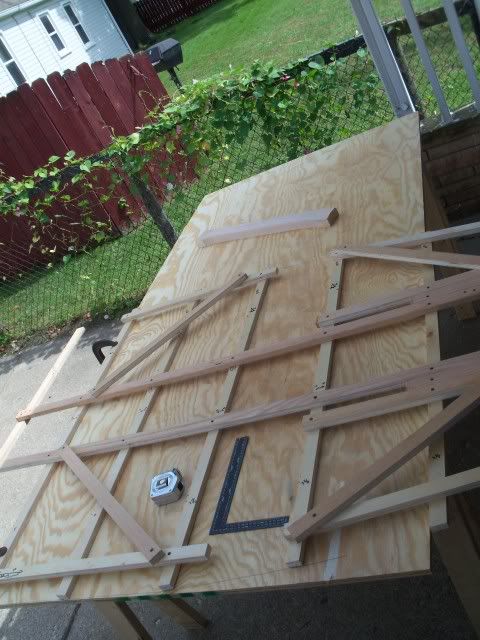
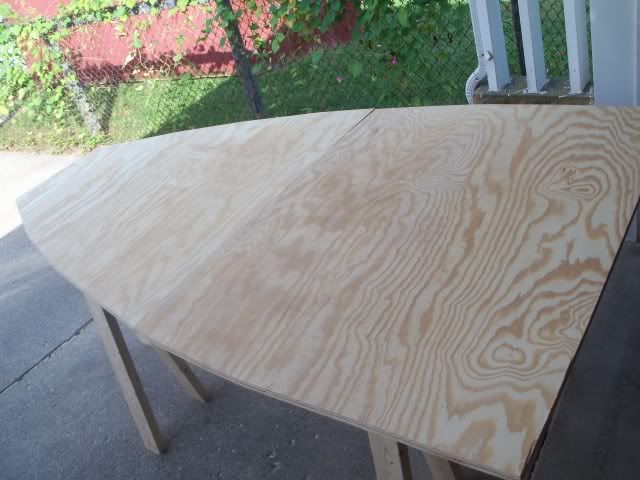
For the stringers, I used exterior grade plywood with epoxy sealed edge-grain. I glued them in with Lok-Tite Construction Adhesive and then fiberglassed them in with epoxy after some great input from fellow Iboaters regarding the pros and cons of polyester resin and epoxy. Being a newB to this, I elected to go with epoxy - didn't have to worry about wax, could use less cloth, but the downside was cost - I went with MaxBond epoxy sold out of Ontario, California. I was a bit unsure about whether to use this or a more well-known brand, but after input from Iboaters who have used it with good success, and a few calls to talk with their chemical engineers, I was ready to try it. I agree with others who have commented that it is relatively thick when mixed, even using their low-viscosity formulation - it translated into not getting as good of a wet-out, and then having to use more epoxy to make up for it - so overall poor epoxy-economy. So net message: I think Maxbond is a good product, however after paying shipping and a lower efficiency of use, you still end up spending close to what it would cost to use a more traditional brand like US composites or Adtech. Still costs less than WestSystem.
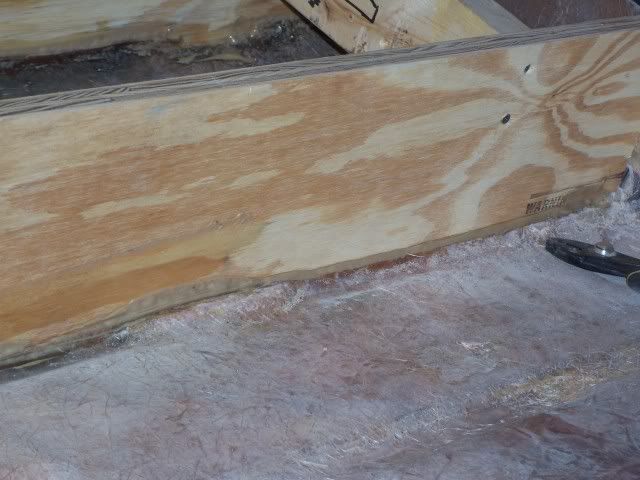
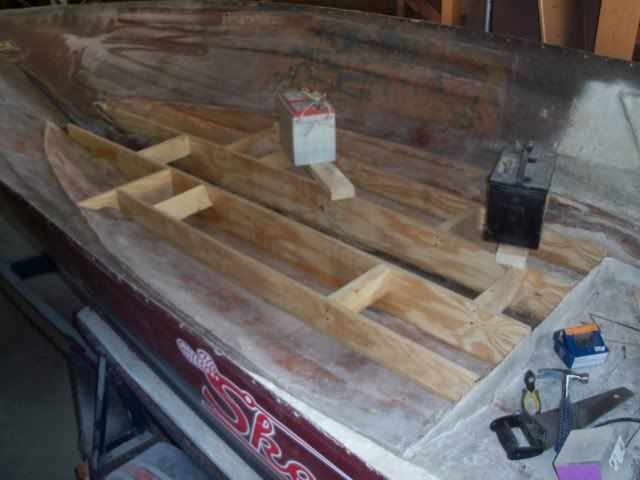
After fiberglassing in the stringers, I laminated two sheets of 3/4" ply together with the same MaxBond epoxy to form the transom, and then put a layer of 17oz glass on one side. I purchased my fiberglass from a local shop - Michigan Fiberglass located here in Detroit - the guys there were very helpful - he recommended using a fiberglass that incorporated both a layer of woven and a layer of chopped strand mat for strength - basically 2 layers in one. This would have been excellent, if the Maxbond had performed better on wet-out. Both good products, just not necessarily the best with each other. I still have to tab in the transom this spring, and will probably use just use 17oz woven, even if I end up using 2 layers. I'll stick with the Maxbond low-visc since I started with it - and I think it will wet-out the woven better than the combo I was using.
It's been a while since I've posted any updates regarding my 77 Skeeter. About a year and a half ago, I was given the boat by my Father-in-Law. He had run it for several years, started working on the electric and never finished. It was stored outdoors for 7-10, so the floor, stringers, and transom were all rotten, not to mention all the wear and tear a decade of weather has on the deck, carpet, hardware, etc. Amazingly, the '81 Johnson started on the 3rd crank when I hooked it up to the battery - these things were tanks. So here's a quick summary of what's happened since:
Motor: For me this was an important starting point - I'm in medical school, so for me to invest any significant money in restoring the boat, I needed to make sure there was a "working furnace in the house" so to speak. I was encouraged that the motor was a Johnson (you can get parts), but was still pleasantly surprised that after clearing out the mouse nest from inside the motor, it fired after only 3 cranks! After firing it, I went through the motor, replaced the lower unit oil, replaced all the fuel lines, and rebuilt the carbs as well.
Structure: To me this was the project that just kept getting bigger. This past summer was mostly tear-down. I knew there was transom and floor rot, so I popped the cap off the boat. Originally, I thought the stringers might be ok, but after the floor came off, I realized that the stern parts of the stringers were definitely rotten. I also checked the foam that was under the floor and realized that even after sitting in my garage dry for almost a year, the bottom 2 inches of the foam was still saturated with water!

Thus started the grinding...I think by the time I was done with the grinding, my wife thought a dust bomb had gone off in the garage - everything was coated in dust. I took the boat down to the hull, but took the time to build a faux-floor that I could use when mapping out a new floor, and I also wanted to use it to measure vertically to synthesize a couple additional stringers. Later on, I also used it to plot out the profile for my new floor.



For the stringers, I used exterior grade plywood with epoxy sealed edge-grain. I glued them in with Lok-Tite Construction Adhesive and then fiberglassed them in with epoxy after some great input from fellow Iboaters regarding the pros and cons of polyester resin and epoxy. Being a newB to this, I elected to go with epoxy - didn't have to worry about wax, could use less cloth, but the downside was cost - I went with MaxBond epoxy sold out of Ontario, California. I was a bit unsure about whether to use this or a more well-known brand, but after input from Iboaters who have used it with good success, and a few calls to talk with their chemical engineers, I was ready to try it. I agree with others who have commented that it is relatively thick when mixed, even using their low-viscosity formulation - it translated into not getting as good of a wet-out, and then having to use more epoxy to make up for it - so overall poor epoxy-economy. So net message: I think Maxbond is a good product, however after paying shipping and a lower efficiency of use, you still end up spending close to what it would cost to use a more traditional brand like US composites or Adtech. Still costs less than WestSystem.


After fiberglassing in the stringers, I laminated two sheets of 3/4" ply together with the same MaxBond epoxy to form the transom, and then put a layer of 17oz glass on one side. I purchased my fiberglass from a local shop - Michigan Fiberglass located here in Detroit - the guys there were very helpful - he recommended using a fiberglass that incorporated both a layer of woven and a layer of chopped strand mat for strength - basically 2 layers in one. This would have been excellent, if the Maxbond had performed better on wet-out. Both good products, just not necessarily the best with each other. I still have to tab in the transom this spring, and will probably use just use 17oz woven, even if I end up using 2 layers. I'll stick with the Maxbond low-visc since I started with it - and I think it will wet-out the woven better than the combo I was using.






















